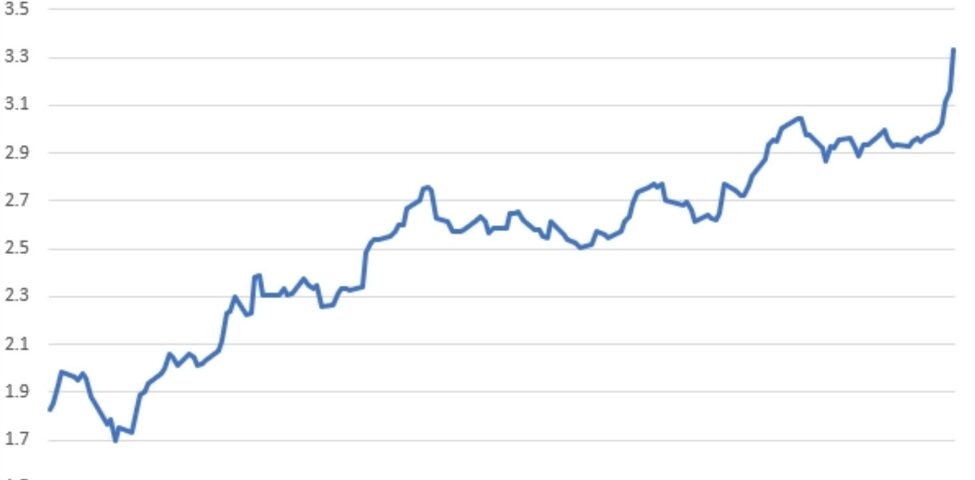
Wisconsin Supreme Court Election 2025: The Battle for Justice and Ideological Control
Tháng 4 1, 2025
Will Tariffs Cool Gold’s Historic Rise? Exploring Future Price Dynamics
Tháng 4 1, 2025The Interplay of Tariffs, Federal Reserve Policy, and Inflation in the U.S. Economy
The current economic landscape of the United States is increasingly characterized by the complex interplay of tariffs, Federal Reserve policies, and the persistent concerns surrounding inflation. Recent discussions among economists and financial analysts have underscored the significant implications these factors have on the economy, hinting at a potential downturn.
Understanding the Economic Implications of Tariffs
Tariffs, particularly those imposed on key imports, have been raising red flags regarding their impact on economic growth. According to Goldman Sachs, the looming tariffs may present substantial risks to economic stability, with a potential recession likelihood estimated at 35%. Such tariffs tend to elevate prices, which inevitably drives down consumer spending—the engine of economic growth. This negative spiral has been echoed by the St. Louis Federal Reserve President, who elucidates that the potential cost of tariffs could exacerbate inflation rates, further complicating the economic landscape. Similar insights are discussed in a recent blog that highlights how recent stock market movements are affected by these economic conditions, emphasizing the interconnectedness of tariffs and inflation with market performances.
The intricacies of alternative sources of supply and demand elasticity become evident as tariffs not only influence product prices but also create uncertainty in market expectations. Businesses facing increased costs may pass these expenses onto consumers, resulting in higher retail prices and thereby promoting inflation. The ongoing discussions reflect a growing concern that these economic impacts can deter recovery efforts and stall growth.
Federal Reserve’s Approach to Interest Rates
In light of these mounting economic pressures, predictions regarding the Federal Reserve’s stance on interest rates are becoming increasingly pertinent. Goldman Sachs foresees significant adjustments in monetary policy, advocating for three interest rate cuts in 2025—specifically in July, September, and November. This anticipated action aims to mitigate the economic challenges posed by current inflationary trends and tariffs.
However, St. Louis Fed President Alberto Musalem emphasizes the necessity of a “modestly restrictive policy” to maintain control over inflation, which currently hovers above the Fed’s target rate of 2%. Musalem’s perspective presents a nuanced approach where curbing inflation is paramount, even as calls arise for lowering interest rates to stimulate growth. This balancing act between fostering a conducive environment for growth while managing inflation remains a sensitive issue, one that the Fed must navigate judiciously. For investors, it’s crucial to consider avoiding common investment mistakes that could arise during times of economic uncertainty.
Persistent Inflation Concerns
Recent economic data, particularly from February, has shown a core PCE inflation figure of 2.8%, exceeding the central bank’s target. The insistence on monitoring inflation expectations—though they may stabilize in the long term—presents an ongoing challenge for policymakers. Economic analysts from First Trust have posited that the Fed’s current monetary policy does not adequately keep inflation in check and argue for a re-evaluation of the existing policy measures. They suggest that greater focus should be placed on the money supply rather than merely adjusting interest rates.
This discourse reflects an underlying apprehension about using traditional monetary policy tools in today’s dynamic economic environment. In essence, while the Fed strategizes on interest rate reductions, the previously mentioned factors—tariffs and inflation—invite deeper scrutiny and may necessitate a reevaluation of approaches to ensure sustainable economic health.
The confluence of tariffs, monetary policy, and inflation concern continues to shape the U.S. economic narrative. Stakeholders must stay informed and agile as these elements evolve, impacting decision-making at individual, business, and governmental levels. For further context on China’s position in this global economic scenario, you can read about three strategic moves by China and President Xi that aim to address these trade tensions.

